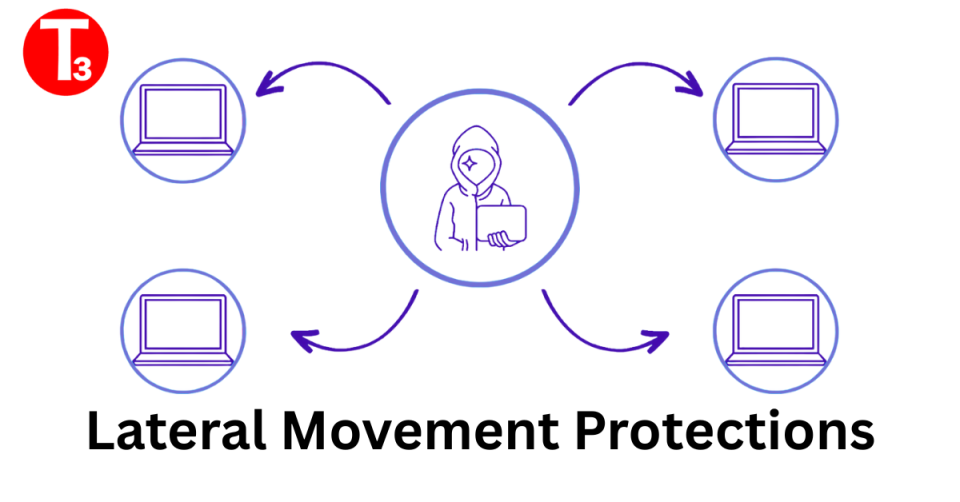National IT Policy Pakistan- First Draft Published
March 13, 2017Home Depot Will Pay Another $25M in 2014 Data Breach Settlement
March 14, 2017TECHNOLOGY IS CHANGING THE CORPORATE WORLD,
FOR BETTER OR FOR WORSE.

The proliferation of devices make it easier than ever for institutions to reach consumers, understand their needs, and personalize their experiences. Every swipe, tap, and click turns into big data that teaches you more about your consumers ,but the growing number of endpoints also means greater opportunities for sensitive data to land in the wrong hands.
A recent study found that financial services is among the top five industries that faced major data breaches last year. These challenges will only become greater in the coming years. Intel predicts that the number of connected devices will grow to 200 billion by 2020, which means more data to protect and more devices to secure.
Here are the top three ways your big data is at risk and how you can protect your customers and your business.
THE DIGITAL LANDSCAPE IS OVER POPULATED
The average Pakistani now owns 2 devices on average. Customers are constantly hopping from network to network and device to device. It can be easy for your branding to get lost in the mix of ads, online reviews, and emails.
Institutions are adopting emerging technology such as beacons and geo-targeted messaging. Older institutions have been acquiring newer, innovative startups. New integrations require different resources and processes to secure them. And legacy systems that remain are often not updated or maintained.
Vulnerabilities in cyber security are being exploited on multiple fronts. Externally, cyber criminals use techniques such as spear phishing and ransomware. Internally, because of the competitive market, some employees may exploit company information for stock trading or other financial advantages.
BUILDING A BRANDED CROSS-CHANNEL EXPERIENCE
Establishing a consistent user experience and educating users on your brand identity can help mitigate some of these data breaches. At Tier3, one way we’ve seen companies build cross-channel brand integrity is through Branded Short Domains and customized URLs.
PROVIDING A SECURE, PERSONALIZED MOBILE EXPERIENCE
Another place to tighten the user experience is on mobile. Consumers open mobile banking apps 30% more than any other type of app. But cyber criminals are increasingly targeting consumer bank accounts on mobile phones.A rise of malicious software programs like Acecard and GM Bot are making it easier for criminals to steal banking credentials from consumers on mobile.
We’ve also seen a rise of SMiShing, phishing via SMS. Scammers will send mass text messages built to look like they are coming from a user’s bank. The text messages will prompt a password reset or ask for other personal information that help hackers gain access to the account.
DEEP LINKS
That’s why it’s so important to use mobile deep links. By detecting the right device and sending users directly to the right app or an app store, deep links can create a friction less experience that takes clients to the right time at the right place every time.
The Associated Press (AP), for example, integrates deep links into social sharing buttons across all of their articles and enable deep linking for every story.
By ensuring that mobile readers opened the app by default, the publisher saw 500,000 app opens and 3,500 visits to the app store in one month… an estimated $12,000 value.
RISING COSTS
While we’re getting smarter at how we communicate with consumers, cyber criminals are also getting more sophisticated at how they hack, share, and sell data.We have been seeing a rise of organized cyber crime. Hackers team up together to work as an organization, pooling time and resources to build stronger, more advanced attacks.
There are also a growing number of tools for the less experienced or even non-experienced individual to launch a cyber attack. Many underground bots are easily downloadable and come with instructions, ready to be used right off the shelf.
Cybercrime damage costs are estimated to hit $6 trillion annually by 2021. As cyber crime rises, companies will have to invest in more technology, software, and talent to both actively fight and defend against these attacks. There are also a growing number of government regulations and agencies put in place to help strengthen security.
This is another layer of compliance for firms to dedicate resources to understanding and maintaining.
INCREASED COMMUNICATION BETWEEN INSTITUTIONS
Continued communication and cooperation between leaders in the financial industry will help fend off a lot of these attacks.
Most recently, we saw eight major banks come together to form the Financial Systemic Analysis and Resilience Center whose mission is to identify, analyze, assess and coordinate activities to fight cyber attacks. Big data also helps break down silos and promote transparency.
Using third-party data software can help you easily organize, consolidate, and share insights that help inform security, like which devices consumers engage most with and how certain channels are used.
CLOUD-BASED SERVICES
Cloud-based monitoring tools will help reduce headcount and the need for multiple platforms. These services will help firms spot weaknesses in the user journey and flag attacks in real-time. According to IBM’s Chief Technology Officer, cloud computing reduces IT labor costs by 50%. Many companies also report that cloud-based services give them more flexibility of their services and more control of their data.
TURN ON AND ENCOURAGE TWO-FACTOR AUTHENTICATION
Two-factor authentication, or 2FA, adds an extra layer of security to your basic login. By turning on 2FA for all of your employee accounts and encouraging your clients to do the same with their accounts, this can help minimize the possibility of a hack.
HACKING YOUR WAY TO A SECURE FUTURE
As the digital landscape grows and the corporate industry evolves along with it, companies will experience some growing pains. The rise of devices will inevitably create more platforms for cyber criminals to target. It means more ground for firms to protect, search for blind spots on, and maintain a branded presence across.
Mobile banking solutions, especially, will have to put measures in place to tighten the user experience and educate clients on identifying authentic content.By building internal databases and external networks that help you see where customers are engaging and which platforms are used most heavily you will be able to identify potential blind spots and weaknesses.
Fighting cyber crime starts by being able to see clear across your user journey.




